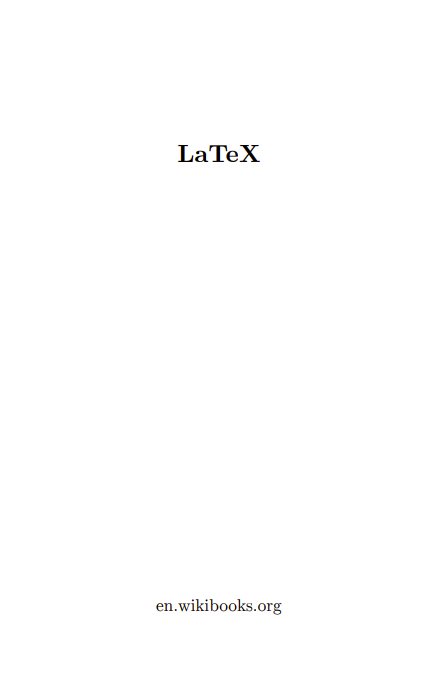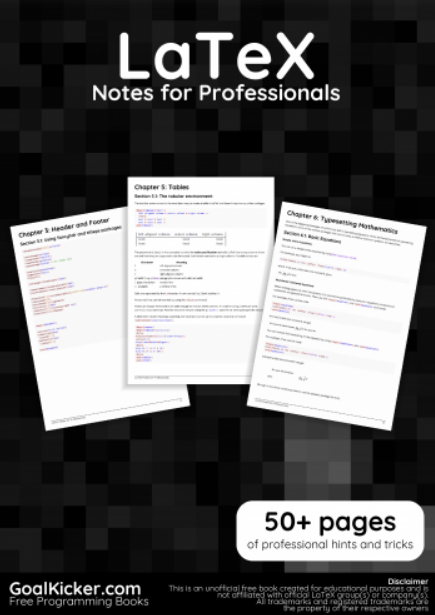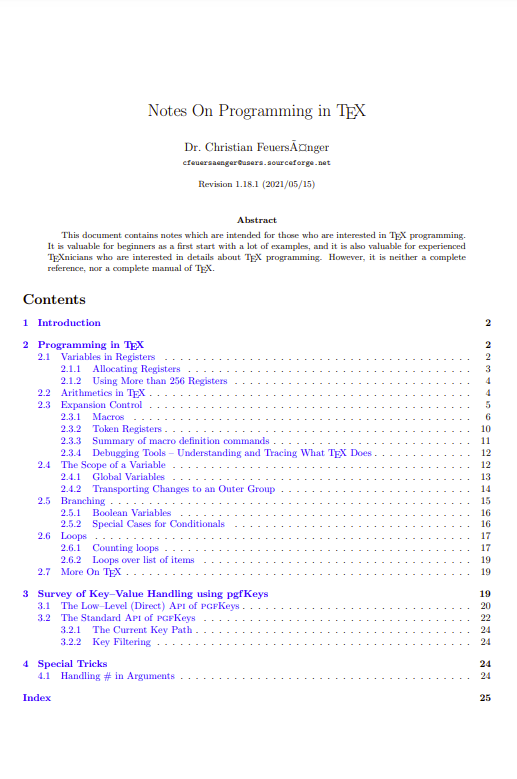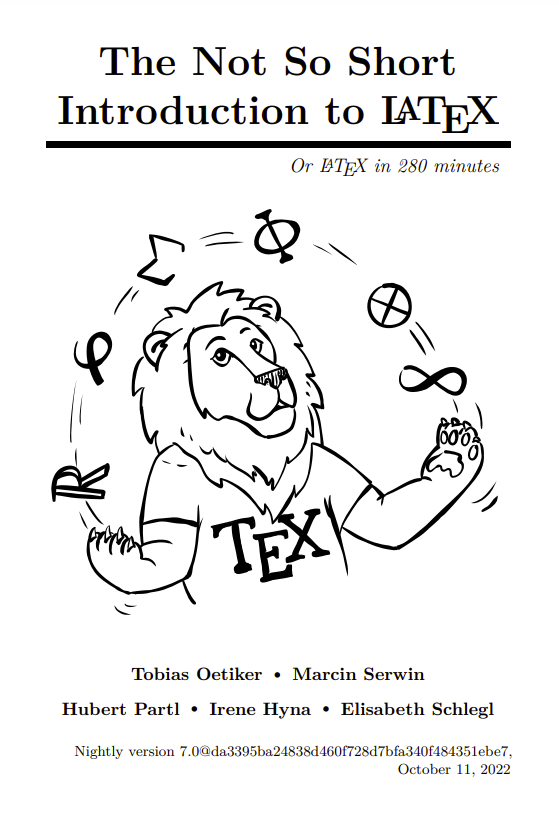This is a guide to the LaTeX typesetting system. It is intended as a useful resource for everybody, from new users who wish to learn, to old hands who need a quick reference.
TeX and LaTeX
TeX is a typesetting computer program created by Donald Knuth, originally for his magnum opus, The Art of Computer Programming. It takes a “plain” text file and converts it into a high-quality document for printing or on-screen viewing. LaTeX is a macro system built on top of TeX that aims to simplify its use and automate many common formatting tasks. It is the de-facto standard for academic journals and books in several fields, such as mathematics and physics, and provides some of the best typography-free software has to offer.
This book is organized into different parts:
- Getting Started will provide you with the very first steps to print your first document, from installing the needed software to basic concepts and syntax.
- Common Elements discusses common features you would expect from a document processor, including fonts, layout, colors, lists, and figures.
- Mechanics are some topics that are not really necessary to write a basic document, but could help you understand how some parts of the system work. These topics are required for fine-tuning documents. Use them as support for various chapters, as they are often being referred to.
- Technical Text focuses on different specialized matters, mostly for scientific work.
- Special Pages is for the structured pages usually put in appendices.
- Special Documents: this part tackles other kind of documents different from the classic article style.
- Creating Graphics is for the process of writing graphics from a LaTeX document.
- Programming or how to create your own macros and packages.
- Miscellaneous contains everything that does not fit in the previous parts, like project management and other subjects related to LaTeX but not inherent to LaTeX itself.
- Help and Recommendations : the FAQ encompasses very common pitfalls and important recommendations for everyone, we urge you to read it; the Tips and Tricks are much more specific matters.
- Appendices.






